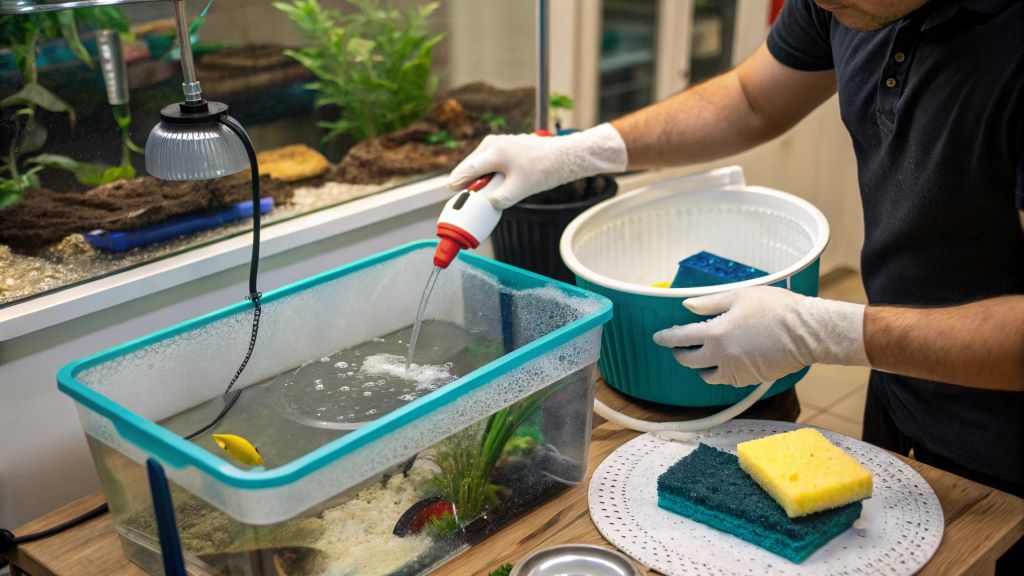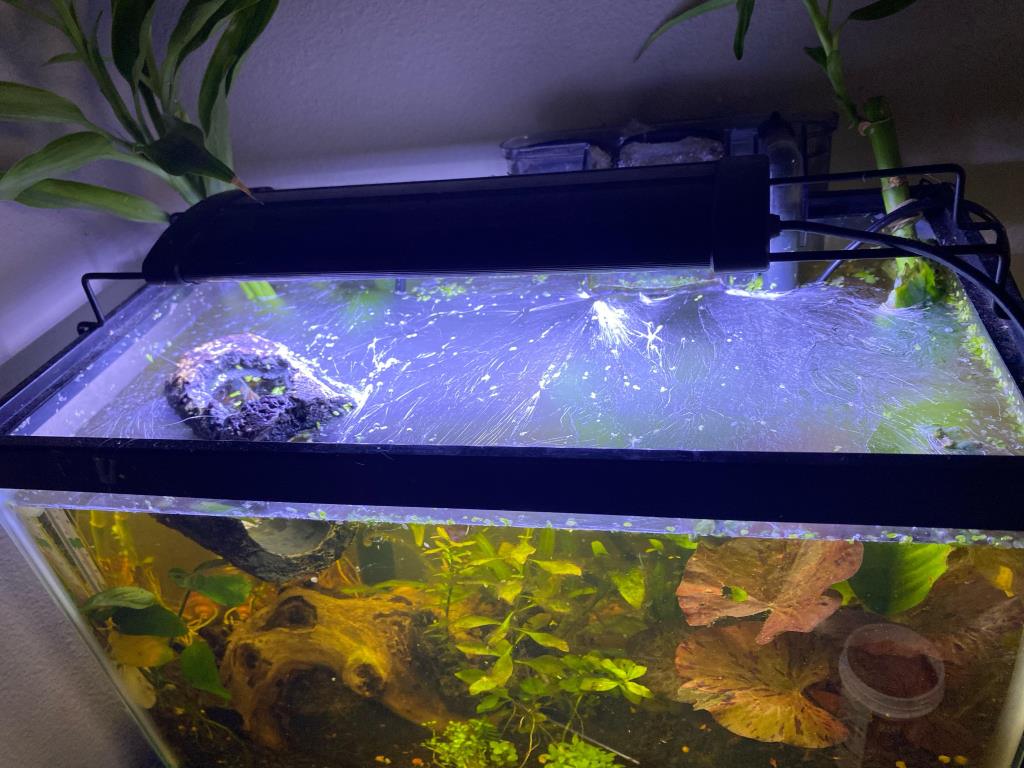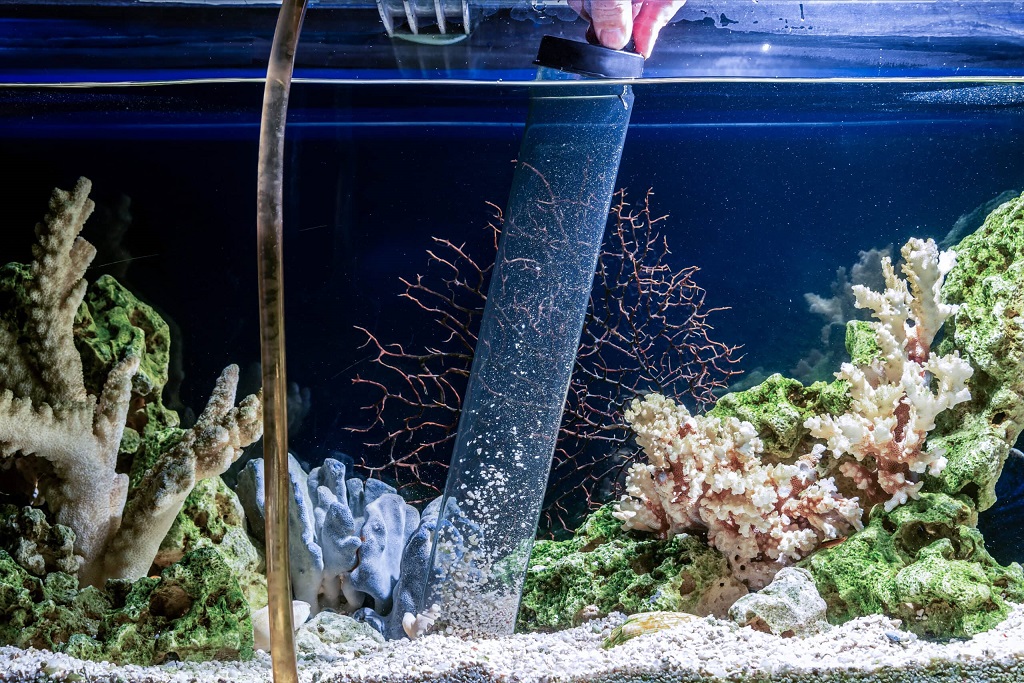Introduction
Maintaining a clean and healthy aquarium environment is crucial for the well-being of your aquatic inhabitants. Regular cleaning of aquarium equipment, such as filters, pumps, and decorations, is essential to prevent the buildup of harmful bacteria, algae, and other debris. One effective method for this maintenance is cleaning aquarium equipment with vinegar , which has become a popular choice among aquarists. While there are many commercial aquarium cleaning products available, vinegar is a natural and effective alternative that has been used by aquarists for years. In this comprehensive guide, we will explore the benefits and drawbacks of using vinegar to clean aquarium equipment, provide step-by-step instructions on how to do it safely, and answer some frequently asked questions.
Pros and Cons of Using Vinegar to Clean Aquarium Equipment
Pros:
- Natural and Safe: Vinegar is a natural product made from the fermentation of ethanol. It is non-toxic and safe for fish and other aquatic life when used correctly.
- Effective Cleaning Agent: Vinegar’s acidity helps to dissolve mineral deposits, remove algae, and kill bacteria. It is particularly effective at removing hard water stains and calcium buildup.
- Affordable: Vinegar is a readily available and inexpensive household product.
- Environmentally Friendly: Vinegar is biodegradable and does not harm the environment.
Cons:
- Strong Odor: Vinegar has a strong, pungent odor that can be unpleasant.
- Potential for Damage: Vinegar can damage certain materials, such as rubber, silicone, and some metals. It is important to test vinegar on a small, inconspicuous area before using it on aquarium equipment.
- Not Effective Against All Contaminants: Vinegar may not be effective against all types of algae and bacteria.
- Can Affect Water Chemistry: Vinegar can temporarily lower the pH of aquarium water. It is important to monitor water parameters after cleaning and take steps to adjust the pH if necessary.
Reviews of Using Vinegar to Clean Aquarium Equipment

Many aquarists have successfully used vinegar to clean their aquarium equipment. They report that it is an effective and affordable way to remove algae, mineral deposits, and other debris. Some aquarists also appreciate that vinegar is a natural and environmentally friendly cleaning agent.
However, there are also some negative reviews of using vinegar to clean aquarium equipment. Some aquarists report that vinegar has damaged their equipment or harmed their fish. Others find the strong odor of vinegar to be unpleasant.
Overall, the reviews of using vinegar to clean aquarium equipment are mixed. It is important to weigh the pros and cons carefully before deciding whether to use vinegar to clean your aquarium equipment.
Aquarium Cleaning for Beginners: A Step-by-Step Guide, Pros and Cons, Reviews, and FAQs
Popular FAQs about Cleaning Aquarium Equipment with Vinegar
Q: What type of vinegar should I use to clean aquarium equipment?
A: White vinegar is the best type of vinegar to use for cleaning aquarium equipment. It is clear and does not contain any additives that could harm your fish or plants.
Q: How do I clean aquarium equipment with vinegar?
A: The following are general steps on how to clean aquarium equipment with vinegar:
- Remove the equipment from the aquarium.
- Rinse the equipment with clean water to remove any loose debris.
- Soak the equipment in a solution of equal parts water and white vinegar for 30 minutes to an hour.
- Scrub the equipment with a soft brush or sponge to remove any remaining algae or debris.
- Rinse the equipment thoroughly with clean water to remove all traces of vinegar.
- Allow the equipment to air dry completely before returning it to the aquarium.
Q: Can I use vinegar to clean all types of aquarium equipment?
A: Vinegar is safe to use on most types of aquarium equipment, including filters, pumps, and decorations. However, it is important to avoid using vinegar on delicate or sensitive materials, such as rubber, silicone, and some metals.
Q: How often should I clean my aquarium equipment with vinegar?
A: The frequency with which you need to clean your aquarium equipment with vinegar will depend on a number of factors, such as the size of your aquarium, the type of fish you have, and how often you perform water changes. In general, it is a good idea to clean your aquarium equipment with vinegar every few months.
Q: Is it safe to use vinegar to clean live plants?
A: Vinegar can be used to clean live plants, but it is important to use a diluted solution and to avoid soaking the plants for too long. A quick dip in a solution of one part vinegar to ten parts water should be sufficient to remove algae and other debris from live plants.
Q: What are some safety precautions I should take when cleaning aquarium equipment with vinegar?
A: When cleaning aquarium equipment with vinegar, it is important to take the following safety precautions:
- Wear gloves and eye protection.
- Work in a well-ventilated area.
- Avoid getting vinegar on your skin or in your eyes.
- Keep vinegar out of reach of children and pets.
- Do not mix vinegar with other cleaning products.
Conclusion
Vinegar is a natural, effective, and affordable way to clean aquarium equipment. However, it is important to use vinegar correctly and to take safety precautions to avoid damaging your equipment or harming your fish. By following the instructions in this guide, you can safely and effectively clean your aquarium equipment with vinegar and maintain a healthy environment for your aquatic life.
Additional Tips for Cleaning Aquarium Equipment with Vinegar:
- For heavily soiled equipment, you can increase the soaking time or use a stronger vinegar solution.
- To remove stubborn algae or mineral deposits, you can scrub the equipment with a toothbrush or other soft-bristled brush.
- If you are concerned about the strong odor of vinegar, you can add a few drops of essential oil to the cleaning solution.
- Be sure to rinse the equipment thoroughly with clean water after cleaning to remove all traces of vinegar.
- Allow the equipment to air dry completely before returning it to the aquarium.
Disclaimer: The information provided in this article is for general knowledge and informational purposes only, and does not constitute professional advice. Always consult with a qualified veterinarian or aquarist for any health concerns or before making any decisions related to your aquarium or aquatic life.
Read More:
Water Changes: Keeping Your Reef Tank Sparkling!
Reef Tank Live Rock: The Living Foundation of Your Reef Tank




